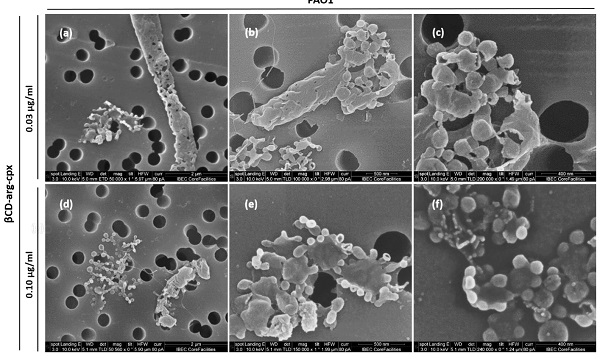Researchers find how to improve existing antibiotics and develop new antimicrobial treatments

The lack of effective antibiotics is an increasingly serious threat to global health. In recent decades, only a few new antimicrobial agents have been able to reach the market. Designing new functionalities for already known antibiotics —or those that have fallen out of use due to toxicity— is one of the strategies to make up for this drug shortage. Now, a study conducted by teams of the University of Barcelona and the Institute for Bioengineering of Catalonia (IBEC) has improved known antibiotics to make them more effective in much smaller doses. This finding opens up the possibility of developing new antimicrobial treatments in an innovative and affordable way.

The lack of effective antibiotics is an increasingly serious threat to global health. In recent decades, only a few new antimicrobial agents have been able to reach the market. Designing new functionalities for already known antibiotics —or those that have fallen out of use due to toxicity— is one of the strategies to make up for this drug shortage. Now, a study conducted by teams of the University of Barcelona and the Institute for Bioengineering of Catalonia (IBEC) has improved known antibiotics to make them more effective in much smaller doses. This finding opens up the possibility of developing new antimicrobial treatments in an innovative and affordable way.
The study, published in Natureʼs journal Communications Biology, is led by Eduard Torrents, associate professor at the UB Faculty of Biology and IBEC principal researcher, together with teams from the Jozef Stefan Institute in Slovenia.
Reusing antibiotics to solve a global problema
A simple and inexpensive way to redesign old antibiotics is to include them in complexes capable of modifying some of their properties (solubility, stability, bioavailability, permeability, etc.) that are essential for them to be efficient against bacteria. For this reason, the team has designed a new ternary complex in which the antibiotic ciprofloxacin binds to the hydrophilic surface of the cyclodextrin through an amino acid —arginine— that acts as a link between the two molecules. Compared to other less stable classical inclusion complexes —which only modify the solubility of the antibiotic— the ternary complex synthesised in this study is also more stable and efficient.
This new complex enhances the drug's interaction with bacterial membranes and increases its bioavailability within the cell, thus improving its antimicrobial efficacy and safety profile. "Its release is more controlled and it allows for a smaller amount to be more effective. Therefore, the treatment is less toxic for the organism", says Eduard Torrents, from the Department of Genetics, Microbiology and Statistics of the UB.
"Our redesigned system could reduce the toxicity or increase the penetration capacity of many antibiotic drugs that have been used for decades and which are no longer in use. In this way, we could take what we already have and give it a new use, improve it, to achieve the efficient antimicrobial treatments we urgently need", concludes the researcher.
Reference article:
Vukomanovic, M.; Gazvoda, L.; Kurtjak, M.; Hrescak, J.; Jaklic, B.; Moya-Andérico, L.; Centra, M.; Torrents, E. «Development of a ternary cyclodextrin-arginine-ciprofloxacin antimicrobial complex with enhanced stability». Communications Biology, November 2022. Doi: 10.1038/s42003-022-04197-9
